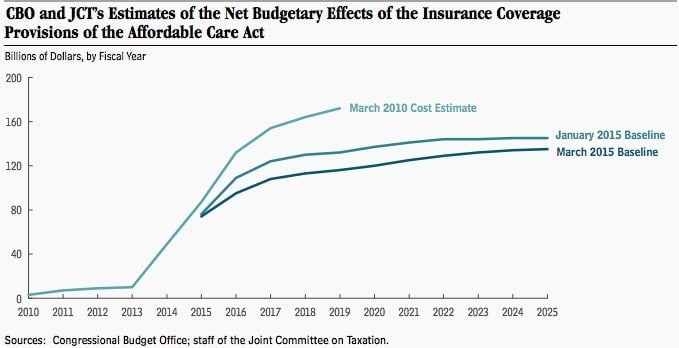Obamacare’s incredible shrinking cost is already cutting future US deficits
The US Congressional Budget Office’s estimate for the cost of Obamacare is falling fast.

The US Congressional Budget Office’s estimate for the cost of Obamacare is falling fast.

The Affordable Care Act’s expansion of health care coverage will cost the federal government $1.21 trillion over the next decade, the CBO said in a new report. That’s $143 billion less than it forecast in January.
Why such a big difference in estimates made just a couple of months apart by the same forecasters? There are several reasons, some of which reflect the law’s success—the slowing of health care cost inflation, for example—and others that reflect its failings—like the wiggle room that led to a 2012 Supreme Court decision allowing states to reject the expansion of coverage for the poorest Americans.
Indeed, the CBO predicts that health insurance premiums to rise more slowly than it originally anticipated, reducing the cost of federal subsidies; and it now expects the law to reduce the country’s uninsured population by 25 million annually, rather than the 27 million it was figuring on before. You can get a good sense of the differences in expectations (from January to March of this year, and also from the time Obamacare was signed into law in March 2010) from this CBO chart:

The reduction of nearly $14 billion in annual spending is a key reason the CBO is forecasting lower deficits in the years ahead, down to 2.4% of GDP (below the average deficit of the last 50 years). Barring changes in policy, that rate is expected to hold steady until 2019, when growth in spending on US senior citizen pensions and health care is expected to push deficits back up—a reminder that for all the promise in the Affordable Care Act, the US will still need to re-jigger its budget priorities to accommodate the country’s changing demography.